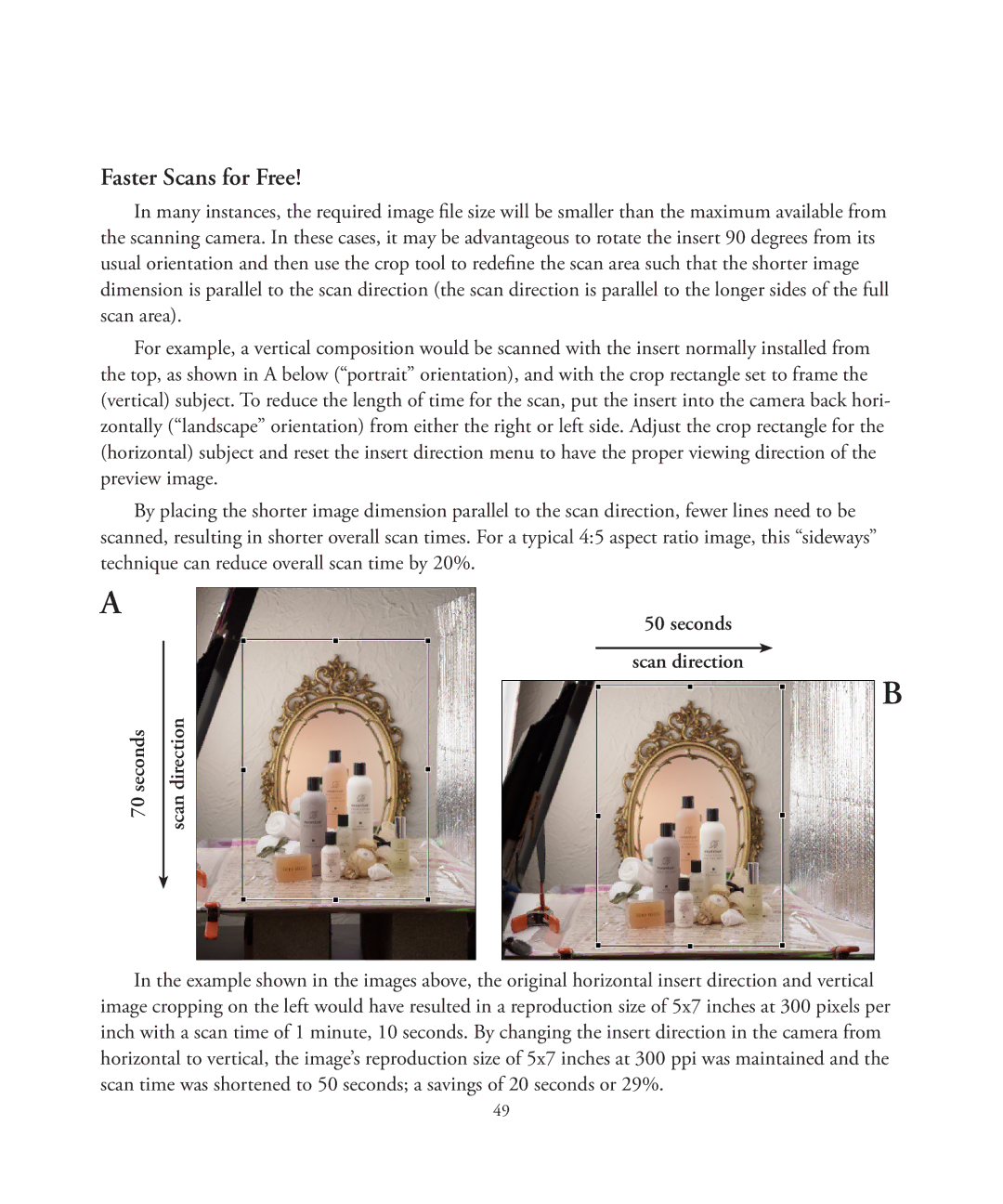
Faster Scans for Free!
In many instances, the required image file size will be smaller than the maximum available from the scanning camera. In these cases, it may be advantageous to rotate the insert 90 degrees from its usual orientation and then use the crop tool to redefine the scan area such that the shorter image dimension is parallel to the scan direction (the scan direction is parallel to the longer sides of the full scan area).
For example, a vertical composition would be scanned with the insert normally installed from the top, as shown in A below (“portrait” orientation), and with the crop rectangle set to frame the (vertical) subject. To reduce the length of time for the scan, put the insert into the camera back hori- zontally (“landscape” orientation) from either the right or left side. Adjust the crop rectangle for the (horizontal) subject and reset the insert direction menu to have the proper viewing direction of the preview image.
By placing the shorter image dimension parallel to the scan direction, fewer lines need to be scanned, resulting in shorter overall scan times. For a typical 4:5 aspect ratio image, this “sideways” technique can reduce overall scan time by 20%.
A
70 seconds
50 seconds
scan direction
B
scan direction
In the example shown in the images above, the original horizontal insert direction and vertical image cropping on the left would have resulted in a reproduction size of 5x7 inches at 300 pixels per inch with a scan time of 1 minute, 10 seconds. By changing the insert direction in the camera from horizontal to vertical, the image’s reproduction size of 5x7 inches at 300 ppi was maintained and the scan time was shortened to 50 seconds; a savings of 20 seconds or 29%.
49
